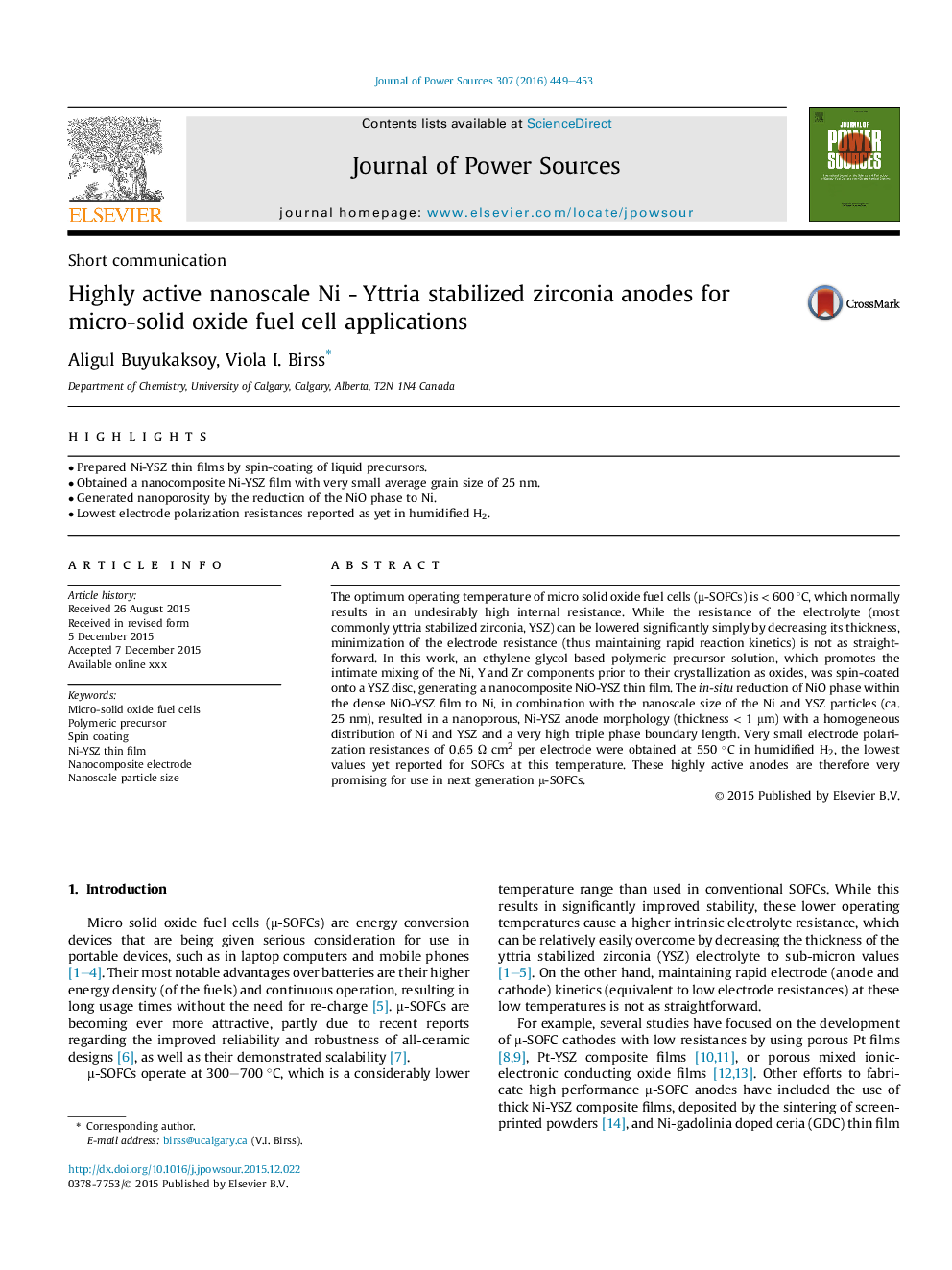| Article ID | Journal | Published Year | Pages | File Type |
|---|---|---|---|---|
| 7728962 | Journal of Power Sources | 2016 | 5 Pages |
Abstract
The optimum operating temperature of micro solid oxide fuel cells (μ-SOFCs) is < 600 °C, which normally results in an undesirably high internal resistance. While the resistance of the electrolyte (most commonly yttria stabilized zirconia, YSZ) can be lowered significantly simply by decreasing its thickness, minimization of the electrode resistance (thus maintaining rapid reaction kinetics) is not as straightforward. In this work, an ethylene glycol based polymeric precursor solution, which promotes the intimate mixing of the Ni, Y and Zr components prior to their crystallization as oxides, was spin-coated onto a YSZ disc, generating a nanocomposite NiO-YSZ thin film. The in-situ reduction of NiO phase within the dense NiO-YSZ film to Ni, in combination with the nanoscale size of the Ni and YSZ particles (ca. 25 nm), resulted in a nanoporous, Ni-YSZ anode morphology (thickness < 1 μm) with a homogeneous distribution of Ni and YSZ and a very high triple phase boundary length. Very small electrode polarization resistances of 0.65 Ω cm2 per electrode were obtained at 550 °C in humidified H2, the lowest values yet reported for SOFCs at this temperature. These highly active anodes are therefore very promising for use in next generation μ-SOFCs.
Related Topics
Physical Sciences and Engineering
Chemistry
Electrochemistry
Authors
Aligul Buyukaksoy, Viola I. Birss,
